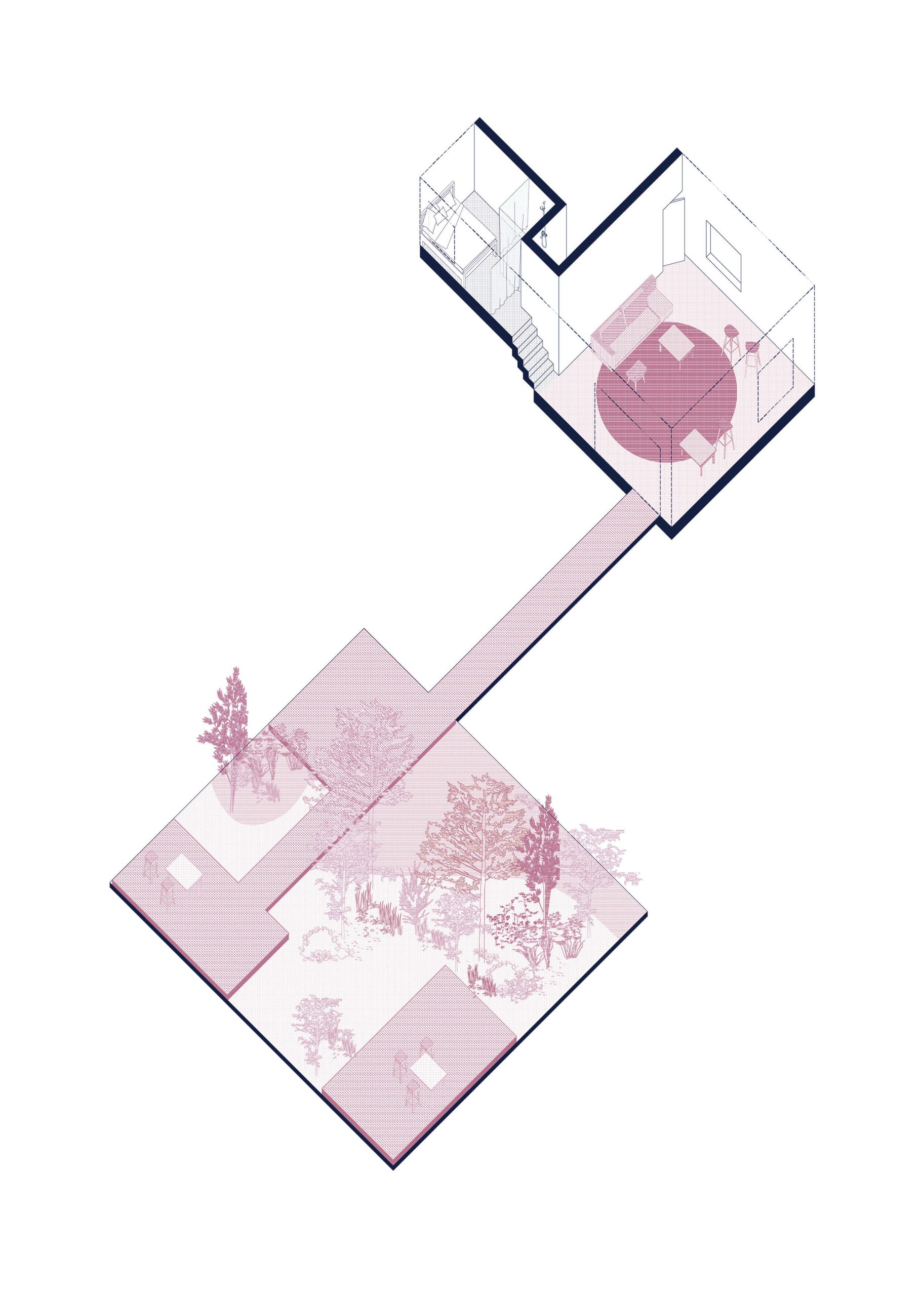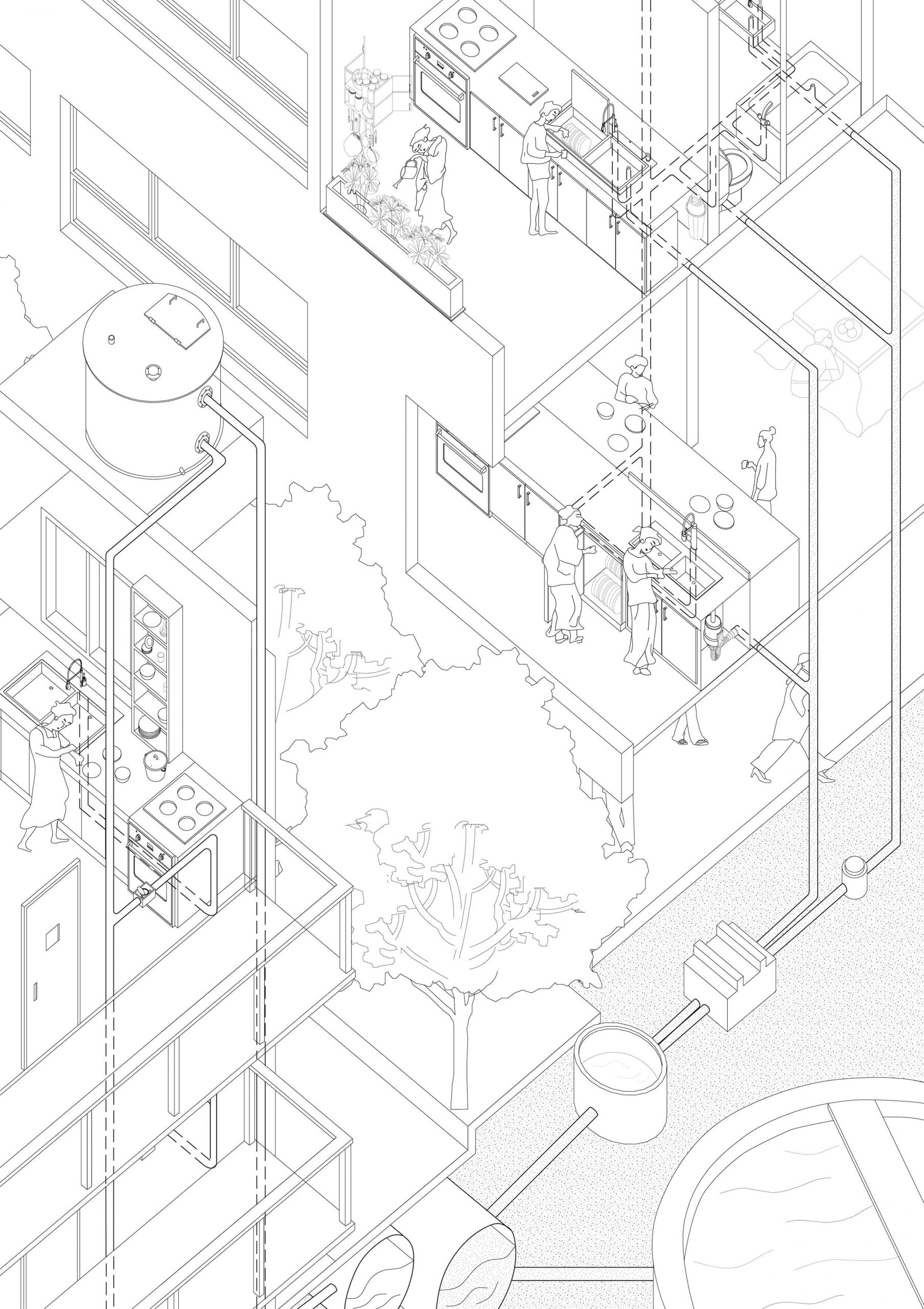TETRIS TERRACE
The block including the site locates right in the south from Jiyugaoka Station. The site con- sists of two types of void following our classify; courtyard type and rooftop type.
The former is in the middle of the block and now used as a parking lot, having potential to be built something. The latter is rooftops of surrounding building which are left unused yet have various places with different level.
In addition, the site is in between two areas, commercial and residential. So it would fit to the program of accommodation.
We made unused rooftops parts of architec- ture. Then we built a volume in the courtyard type void. Depending on the charcteristics of the rooftop terraces, we deformed daily life and gave a specificities to 7 each rooms.
In this way, we formed each room as a set of a inside room and a rooftop terrace. In order to make the architecture a benchmark, we designed a rectangular volume of reignforced concrete structure with minimal facade, yet complex with different form of rooms and a staircase inside. The architecure hence looks seemingly very simple, however, consists of different characters of rooms with full of un- predictability.
Student: Xiaohan Gao
Sink
While the shape and function of the sink has remained largely similar throughout its modernization, as a network it has greatly changed through time, perhaps most tangibly expressed in the reduction of the visibility of water in Japanese daily life. Even though water-supply systems were introduced within cities in the Edo Period, daily water management still entailed close human interactions: guarding the water source, lifting water from the well, common laundry activities, etc. Although the widespread introduction of underground water-piping systems and pumps after World War Two enabled the direct delivery of water to individual apartments, wastewater still remained open and thus visible. Further improvements in the closing decades of the twentieth century, in the form of pressure pumps, facilitated universal direct supply, even to multistory buildings. At the same time, grey water and black water are now systematically transported to treatment plants through a sewage system, hidden from sight, before being fed back into rivers or the sea.
Rice Cooker
Rice cooking is an essential part of Japan’s kitchen culture. More than other devices, the rice cooker illustrates its own transformation through technology. In the traditional Japanese household, cooking took place in the kamado, a kitchen space at the entrance with a fixed stove fueled by charcoal. By contrast, today’s rice cooker condenses the functions of energy provision, heating, cooking, and smoke extraction in one single technical device, transforming rice cooking into a more rapid, convenient, clean, and less space-demanding activity. The modern rice cooker is small, lightweight, portable, and easily replaceable, yet as opposed to the kamado it is also deterministic and monofunctional, challenging our understanding of what kitchen culture might be.

